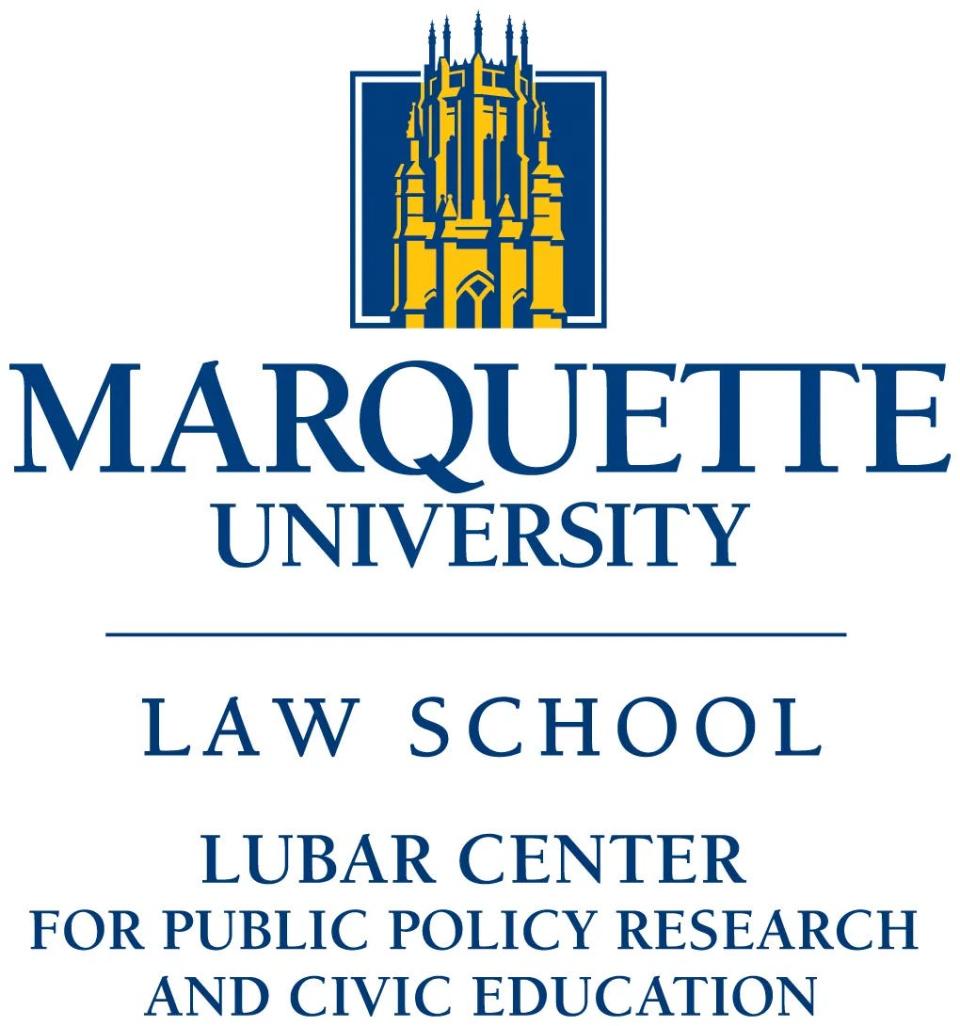RNC comes to Milwaukee metro area with a new, more challenging political landscape
Republicans are holding their 2024 national convention in a swing-state metropolis where the political ground has been steadily shifting against them.
The four-county Milwaukee metro area, home to more than a quarter of Wisconsin’s voters, voted Republican for president in 2000 and 2004. But not since.
It voted Republican for governor in 2010 and 2014. But not since.

Despite the very blue city at the region’s core, the GOP’s utter dominance of the suburban vote in recent decades made Wisconsin’s biggest metropolis redder than the rest of the state. But no longer.
Suburbs that used to be purple are now blue. Suburbs that used to be red are now purple. Suburbs that once voted Republican by 40 points now vote Republican by 10.
This is not the only big change in Wisconsin’s political map in recent years. Some others, like the GOP’s surge with rural voters, are helping the party, not hurting it. Rural gains propelled Donald Trump to victory in Wisconsin in 2016. Suburban losses helped seal his defeat in 2020.
No one knows how these crosscurrents will play out in November, especially amid the current chaos of the presidential campaign, including the questions swirling around President Joe Biden's candidacy since the televised presidential debate and Saturday's attempted assassination of Trump.
But the Republican decline in the Milwaukee suburbs has altered Wisconsin’s election math, and it has altered this region’s political character.
Ten years ago, I wrote a series of stories for the Journal Sentinel called “Dividing Lines” that explored the extreme partisan fault lines within metropolitan Milwaukee. I argued that based on where Republicans and Democrats live, the four-county Milwaukee area was the most polarized place in swing-state America.
At the time, Milwaukee’s red-blue divide had two outstanding features.
One was the vast chasm between “red” Milwaukee (the suburban “WOW” counties of Waukesha, Ozaukee and Washington) and blue Milwaukee (the city and its inner suburbs), two worlds on opposite sides of the Milwaukee County line.
One camp of voters lived in red Milwaukee and delivered landslides for Republican candidates. Another lived in blue Milwaukee and delivered landslides for Democratic candidates. Only a small minority of voters lived in neighborhoods that could be described as truly mixed politically.
The physical distance between these worlds was small, but the political distance was massive. In the 2012 presidential race, Democrats won Milwaukee County by 36 points and Republicans won the WOW counties by 35 points — a 71-point difference. This was the biggest gap between urban and suburban counties of any top 50 metro except New Orleans.
The other hallmark of this divide was its trajectory. This voting gap had grown with virtually every election for president and governor since the early 1970s.
Red and blue Milwaukee spent decades reliably spinning apart, spurred by white flight and racial segregation and political sorting and ceaseless battleground competition and sky-high levels of political engagement and mobilization.
But as things turned out, this trend had a ceiling. Milwaukee’s urban-suburban divide reached its apex with the 2012 election for president and the 2014 mid-terms. Since then, the gap between how blue Milwaukee County votes and how the red WOW counties vote has not only stopped growing – it has started shrinking, reversing a trend line nearly half a century old.
The voting gap between Milwaukee County and the WOW counties (Waukesha, Ozaukee and Washington) declined from 71 points in 2012 to 65 in 2016 and 62 in 2020.
As those numbers suggest, metropolitan Milwaukee is still quite polarized. It’s still politically segregated. It’s still home to neighborhoods that are 95% blue and 70% red.
But the old fault lines have been blurring a little. The Milwaukee County line is not quite the partisan border crossing it used to be.
And that’s happening not because the blue parts of Milwaukee are getting less blue. In fact, they keep getting bluer. It’s happening because the red parts are getting less red.
George W. Bush won the WOW counties by 36 points in 2004. Trump won them by just 23 in 2020. Bush won Ozaukee County, the WOW county with the highest levels of income and education, by 32 points in 2004. Trump won it by 12 in 2020.
The WOW counties were for decades the most Republican counties in every big Wisconsin election. In the 2022 race for governor, Waukesha ranked 29th of 72 counties in its GOP margin. Ozaukee ranked 44th.
When you factor in turnout, the WOW counties used to be, by some measures, the highest-performing GOP counties in America. Now they are home to some of the most politically fluid places in Wisconsin, communities that have done a political “180,” getting less Republican in each of the past four election cycles: 2016, 2018, 2020, 2022.
From 2000 through 2016, none of the roughly 70 communities in the WOW counties voted Democratic for president. Few were even close. That streak ended in 2020 when the city of Cedarburg voted for Biden by 19 votes. Six other municipalities in Ozaukee and Waukesha voted Republican by only single digits.
From 1990 through 2018, not a single “WOW” community voted Democratic for governor, and only one (Port Washington in 2006) was ever decided by single digits. That streak ended in 2022, when the village of Thiensville voted for Gov. Tony Evers by 38 votes and Port Washington voted for Evers by five votes. Nine communities in Waukesha and Ozaukee were decided by single digits. Eight years earlier, those nine communities voted for Republican Scott Walker by an average of 36 points.
These increasingly purple suburbs tend to be closer to Milwaukee County, more densely populated, and with higher rates of college education — places like Elm Grove, Brookfield, Mequon and Menomonee Falls.
The forces that are changing the GOP's fortunes in the suburbs
The GOP’s diminishing margins in these communities are shaped by demographic change, political issues such as abortion, and voter attitudes toward Trump, the party’s dominant figure. But these suburbs are also following a national trend that pre-dates the rise of Trump, as metropolitan suburbs grow more diverse and college-educated voters drift away from the Republican Party.
This trend came later to the outer Milwaukee suburbs than it did in many other northern metros. As a result, it represents an abrupt reversal of patterns that once felt like permanent signatures of Wisconsin politics.
In 2012, only 12% of the metro area’s voters lived in wards decided by single digits; in 2020, 22% did. In effect, metro Milwaukee is less “sorted” than it was a decade ago.
But that is not true of the state as whole, where the rise of “landslide communities” marches on, largely because so many small towns that used to be purple are increasingly red, and because so many densely populated, blue neighborhoods in and around Milwaukee and Madison and some smaller cities have gotten even bluer.
In other words, Wisconsin’s ’s urban-rural divide is now the big driver of this geographic polarization. While it has very deep roots, the urban-rural gap has grown dramatically bigger in the state over the past decade, even as the urban-suburban gap in Milwaukee and other metros has begun to narrow.
These two trends, driven partly by a growing education gap in the electorate, have changed each party’s path to victory in statewide elections.
Republicans are more reliant than ever on the rural vote, Democrats on the metropolitan vote.
Each party’s gains and losses have mostly offset each other in recent statewide elections. That’s why Wisconsin is still as much a battleground as it was 20 years ago.
But the GOP’s slipping fortunes in the state’s most populous region have made it harder for the party to win anything other than very narrow victories in the Trump Era.
Consider the math.
In elections for governor, Republicans have gone from winning the four-county Milwaukee area by almost 50,000 votes in 2010 and 2014 to losing it by almost 20,000 in 2018 and roughly 70,000 in 2022.
In presidential races, Republicans have gone from winning the metro Milwaukee by roughly 20,000 votes in 2000 and 10,000 in 2004 to losing it by almost 60,000 votes in 2016 and almost 90,000 in the 2020.
That is a swing of more than 100,000 net votes in a state decided by 20,682 votes in 2020.
These election trends don’t tell us which party is going to win Wisconsin’s 10 electoral votes in November. Republicans could stem their suburban losses and win small towns by even bigger margins this time. Or their erosion in the state’s most populous places could prove too much to overcome.
But whatever happens, Milwaukee and its suburbs present a different kind of challenge to both parties than they used to.
The old calculus was always strength versus strength. Which side can out-mobilize the other on their home turf? Which side can generate bigger landslides on their side of the partisan divide? There was a feeling that the size of the chasm between red and blue Milwaukee – the level of polarization and partisan segregation – was reinforcing, that it amplified the region’s political divisions.
The new election calculus has an element of weakness vs. weakness. Republicans worry about slowing or stopping their decline in red suburbs that were once bedrocks.
Democrats now worry about the very blue city of Milwaukee, not only about its turnout levels but about preserving their nearly 60-point vote margins in the city at a time when polls show the party’s support weakening among Black and especially Hispanic voters.
It is ironic, and a sign of the times, that Republican ambitions in metropolitan Milwaukee these days may have more to do with making inroads among urban voters than running up the score with suburban voters.

Craig Gilbert provides Wisconsin political analysis as a fellow with Marquette University Law School's Lubar Center for Public Policy Research and Civic Education. Prior to the fellowship, Gilbert reported on politics for 35 years at the Journal Sentinel, the last 25 in its Washington Bureau. His column continues that independent reporting tradition and goes through the established Journal Sentinel editing process.
Follow him on Twitter: @Wisvoter.
This article originally appeared on Milwaukee Journal Sentinel: RNC comes to a Milwaukee metro area with a new political reality